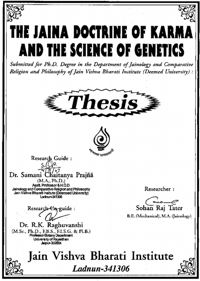Genetic Engineering is the heritable, directed attention of an organism. Altering DNA or adding new DNA allow us to change the characteristic of a cell or cells. Non germ line alterations are not carried to the next generation. Only half of our genes are given to our offsprings, diluting any germline genetic modifications overtime. DNA carries the instructions as genes, proteins perform the actions. Regulation of gene is as important as gene function. Foreign DNA may be rejected. While the human genome project may give us the entire sequence of our DNA, scientist must still determine how all the encoded proteins work.
Genetic Engineering is the method of transfer a gene from the DNA of one species to the DNA of another species. Genetic Engineering gets to the very core of how life works and people are inclined to have very strong feelings about it. Genetic Engineering was probably the most important scientific event of the 20th century. It was the discovery by James Watson and Francis Crick (1953) of the structure of the DNA molecule, which is basis of heredity. Darwin has shown how species might have changed over eons and slow, random natural processes. Watson and Crick gave us the key to moving evolution along much faster, to suit our own purposes.
A DNA molecule is like a string of letters, using a four letters alphabets, easily copied when living cells reproduce. The sequences of letters make sentences, which we call genes. One kind of gene gives a cell the necessary instructions for making one of the various kinds of protein, used for structures, enzymes, signals and basic mechanisms of life. The other kind of sequence is used as a control mechanism so that a cell can tell when to make which protein and when to do something else.
Scientist learned the language of protein-making gene sequences. The language is the same for all form of lives. Gene sequences are control sequences and are like switches that turn other genes on or off. A control sequences could have different results in different organisms. Some control genes are used to turn another gene on, and the others are used to turn another gene off.
For example a cell needs protein A, but not in much amount. If the genes that tells the cell to make protein A is turn on, eventually the control gene will sense that there is lot of protein A available, then it will turn off the protein making gene. Later when the supply of protein A has is used, the control gene will relent and let the protein making gene turn back on.
Each different organism has ten thousands different genes and make a huge number of proteins. Life is enormously. Complex however, hundreds of genes are now understood completely. There are many more genes, which have been discovered and associated with some function, but not yet understood very well. There are practical applications of this knowledge. The first practical applications were in medicine, using genetically modified bacteria to make medical drugs such as interferon, human growth hormone and human insuline. The second kind of application was to modify organisms for agricultural purposes.[28]
 Prof. Dr. Sohan Raj Tater
Prof. Dr. Sohan Raj Tater
 Doctoral Thesis, JVBU
Doctoral Thesis, JVBU